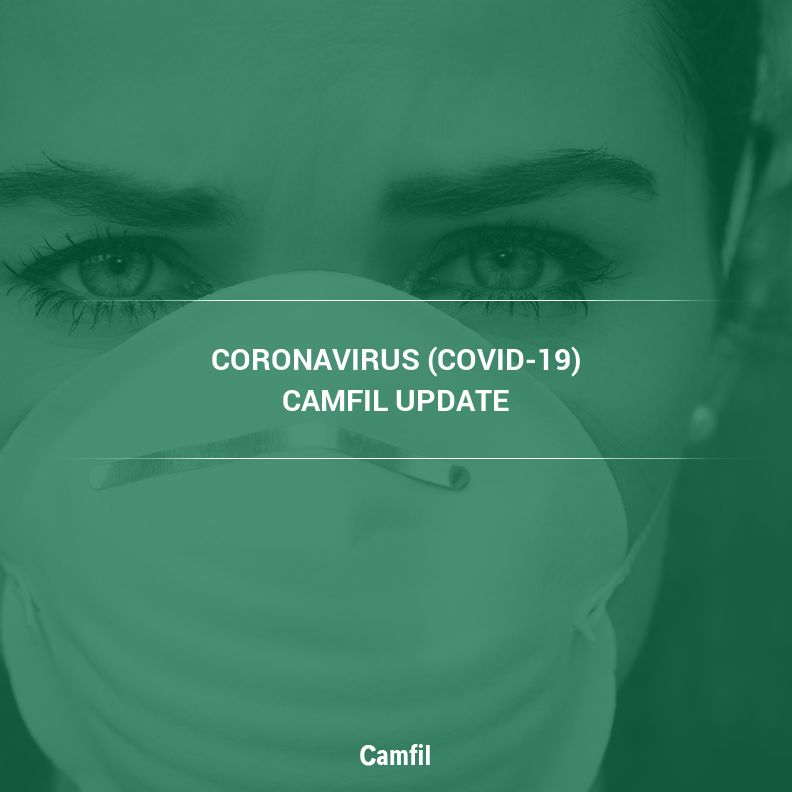Is the Coronavirus (COVID-19) threat to human health. Camfil a Global Leader in Indoor Air Quality Educates Using Comprehensive Resource
Facts on Viruses
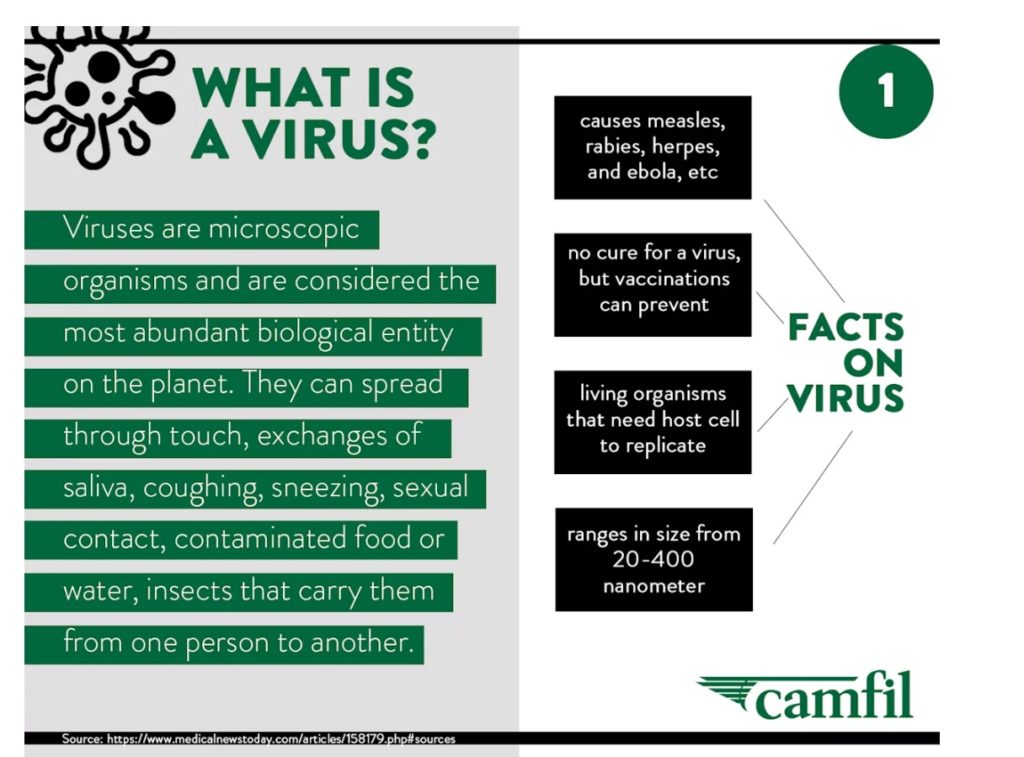
New Jersey, NJ, March 02, 2020- How Camfil can help in reducing the risk of infectious virus in the indoor air using high efficiency air filtration
A research team comprising scientists from the United States, Canada and Spain reveals that more than 800 million viruses fall on every square meter of the planetary boundary layer (the lowest part of the atmosphere) every day – the equivalent of 12 viruses for every person in the UK, 25 viruses per person in Canada.
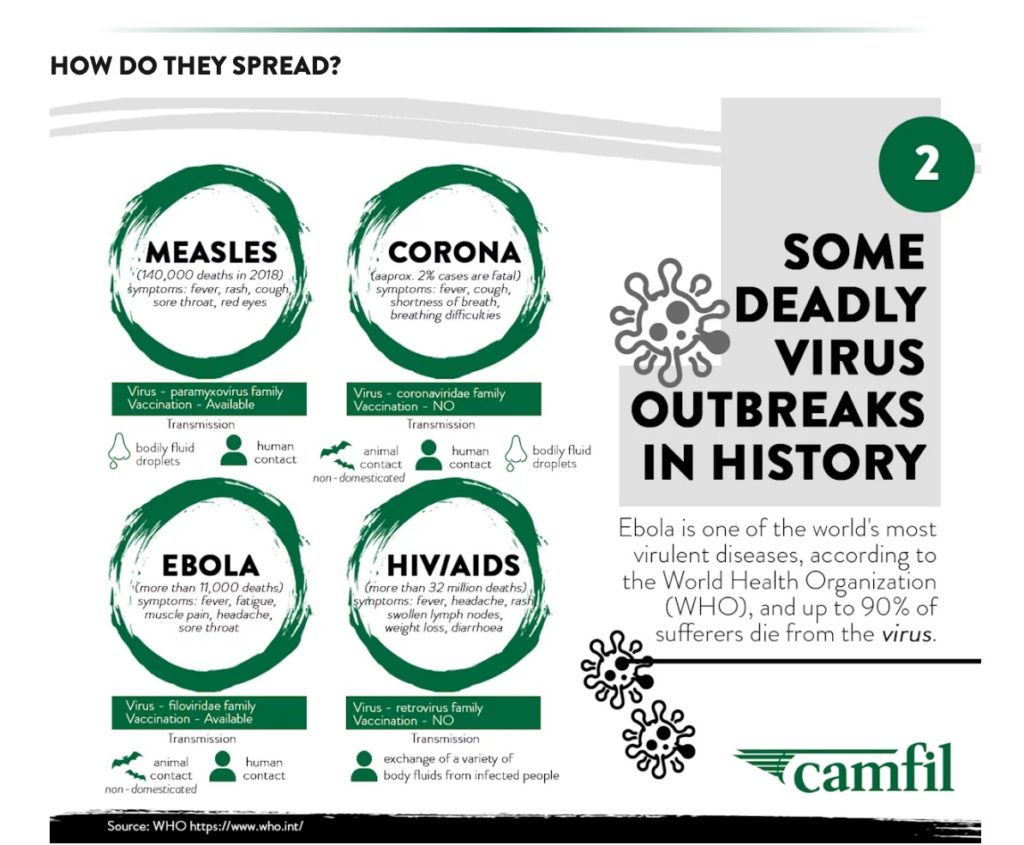
Download resource on reducing the risk of infection through virus by combating the air pathogens by Camfil
The risk of getting an infection through virus is high as, unlike bacteria, rain cannot wash them away.
A potentially devastating new disease has infected thousands of people since it was discovered in Wuhan, China in December last year. Chinese cities have been placed in lockdown in a bid to control the spread of the virus.
This latest strain of the disease is particularly threatening because it causes pneumonia but will not respond to antibiotics. However, coronavirus (COVID-19) is by no means the only threat to human health.
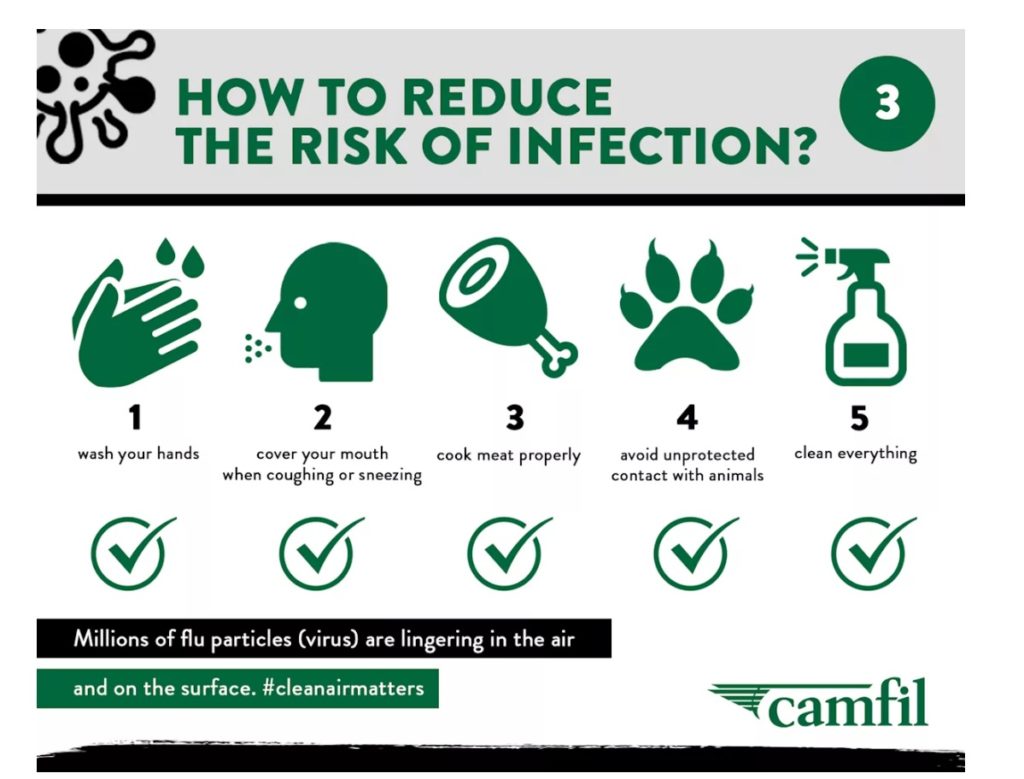
This, of course, begs an important question – Camfil content team published an in-depth piece on air quality in China https://cleanair.camfil.us/2017/10/05/fight-air-pollution-china/
What can you do to protect yourself

From these infections (not to mention other biological contaminants that pose health risks for building occupants such as smoke, mite, bacteria, house dust and pollen)?
Unlike with many other risks, we have no choice about breathing. But while most of us don’t have the power to make the air cleaner, there are some things individuals can do to reduce the effect of these infectious particulates in the air.
HEPA filters can reduce the impact of the virus from the air
HEPA filters have been proven over decades across a wide range of healthcare facilities and life sciences applications, controlling the spread of airborne particles and organisms such as viruses and bacteria.
Indeed, many professional engineering organizations recommend HEPA (high-efficiency particulate air) filters in hospitals, infection control clinics and other healthcare facilities to eliminate microbes and other dangerous particles.
True high-efficiency particulate air (HEPA) filters most commonly are rated by test methods that begin with a minimum capture efficiency. The efficiency of HEPA filters is measured at MPPS (most penetrating particle size) that means this is the lowest efficiency of the filter.
For smaller or larger particles that filter will perform even better. MPPS is typically between 0,1-0,25 micrometer in size. Bacteria and viruses are often smaller than that but typically attach themselves to larger particles. It’s also important to understand HEPA filters do not actively kill living organisms. They capture and hold them within the matrix of the filter.
High efficiency air filters can be installed in HVAC systems, filtering out biological pollutants and particulate matter carried by the airstream, preventing them from entering or recirculating back into the room.
As unfiltered air flows through the HVAC unit’s ductwork, the air filter captures and holds the airborne pollutants.
For further risk mitigation of airborne pathogens, it is recommended to upgrade or install the highest possible efficiency HEPA filtration (H13 or higher) in the existing ventilation system. This will improve your chances to avail an extra layer of protection against airborne pathogens.
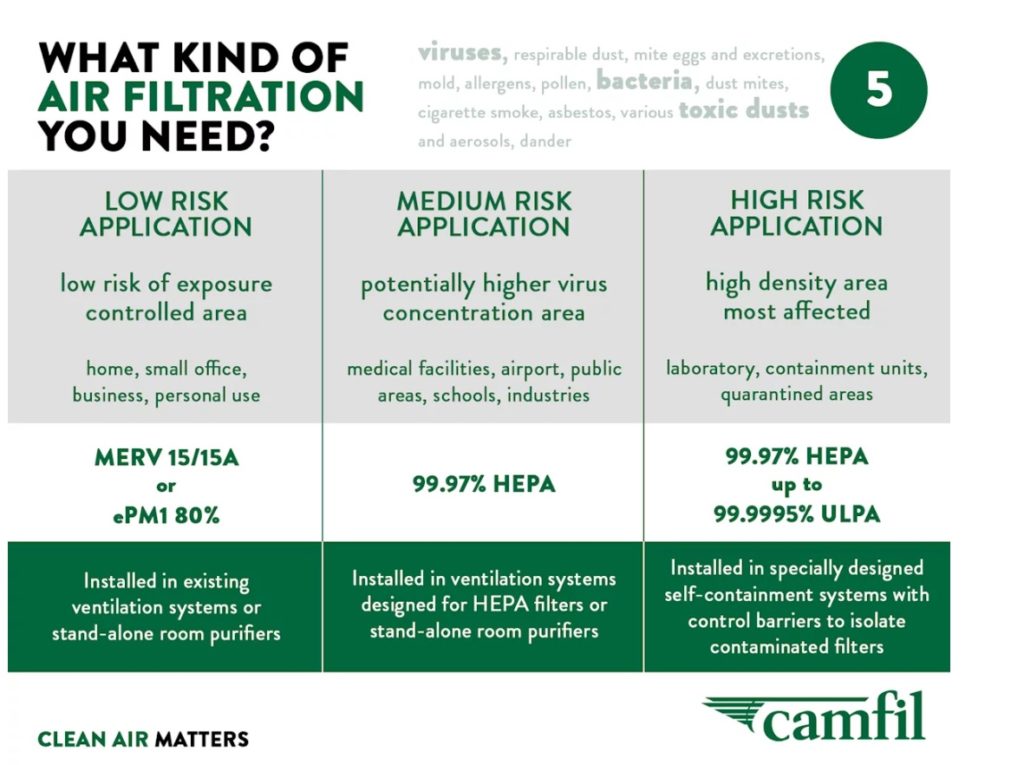 What kind of solutions you need to reduce the risk of virus in the air?
What kind of solutions you need to reduce the risk of virus in the air?
Visit this visual resource on Camfil here.
https://www.camfil.com/en/insights/life-science-and-healthcare/virus
Virus containment at health care facilities and biosafety labs is very much about control measures and precautions for airborne exposure. Measures include ventilation, pressure differentials, exhaust ventilation, air filtration and cleaning, ultraviolet and germicidal irradiation (UVGI) and even temperature and humidity control.
Air filtration solutions depend on the category of the risk when in application. High-density areas with most affected surroundings such as laboratories, containment units, quarantined zones need much higher level of protection compare to low risk exposure surroundings or controlled areas like homes or small business space. High risk application needs air containment and filtration equipment of HEPA Class H13 or higher along with use of special personnel equipment and clothing, as well as a segregated air supply, among other precautions.
Consider using air cleaners for fast and easy retrofit in case of a sub-standard ventilation system for improvement in air filtration. It is also a way to rapidly boost the air quality of an already good functioning system when there is an increased risk that demands even better protection.
For crucial high-risk applications such as quarantined zones and laboratories, Camfil, a global leader in air filtration, provides compelling containment equipment.
However, an air cleaner is recommended for use where the risk of airborne contamination is elevated.
Both containment units and air cleaners cannot be installed anywhere as they are specific to the risk and nature of the surroundings, but an air cleaner can never replace a full containment set where there is a need.
On the other hand, low risk applications can consider using EPA filters or ePM1 80% or higher category of air filtration.
“There are more than 60 biosafety laboratories classified as Level 4 (highest risk) by an international commission in the world.
Camfil has already delivered containment solutions for many of them in China, France, Switzerland, Germany and the U.S.A” – Anders Sundvik, Vice President Research & Development, Camfil
See the graphic created by Camfil experts to understand air filtration and containment requirements on the basis of its application.
In order to educate and create awareness about role of air filtration and containment of airborne infections in order to reduce the risk indoors, Camfil has created a series of education based infographics that provides value-based insights in order to combat the virus in the air. Please find them here.
Camfil’s clean air solutions help to reduce the potential spread of diseases through the air handling systems of biosafety labs and hospitals.
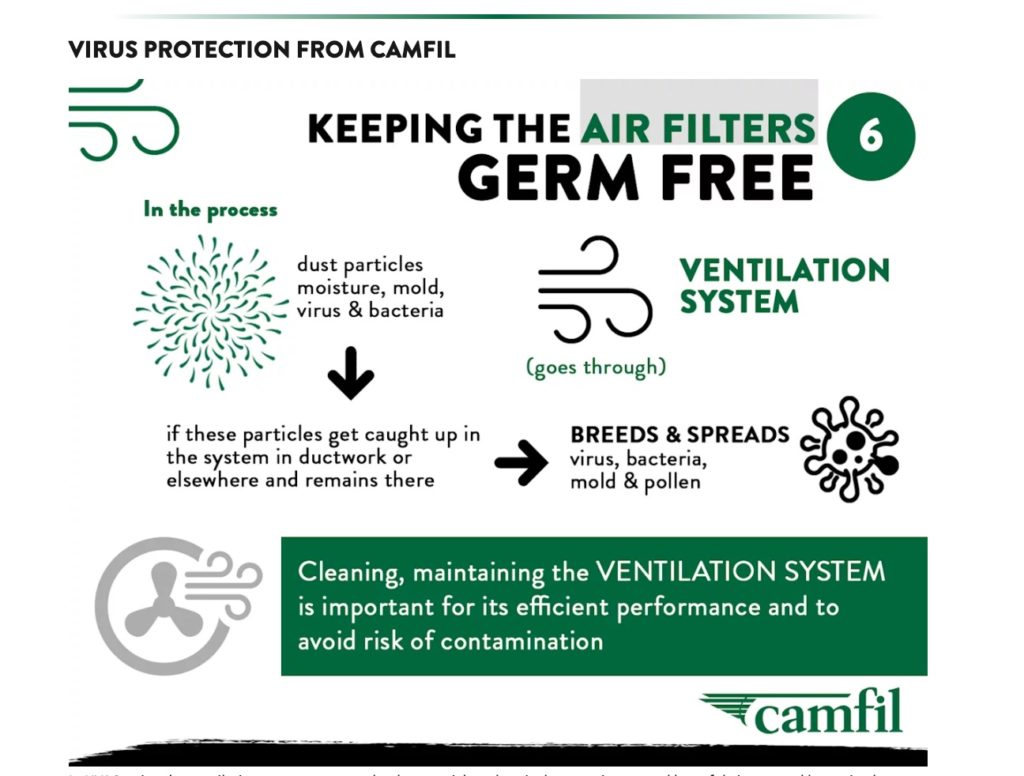
For more information about our range of HEPA, EPA and ULPA filters, visit www.camfil.com and reach the experts.
Contact Camfil Air Filteration expert near you.
The post Camfil USA Update – Reduce Risk of Infectious Virus appeared first on Air Filters for Clean Air.

